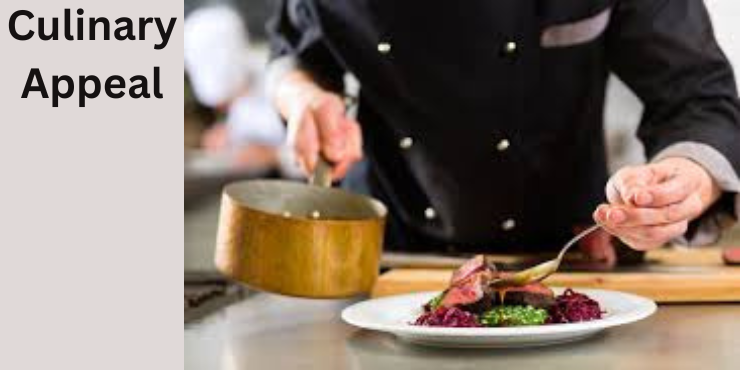Table of Contents
Introduction
Welcome to our culinary journey where we explore the exquisite delicacy known as monkfish tail. In this comprehensive guide, we delve deep into the realms of taste, texture, cooking techniques, and nutritional benefits of this prized seafood. Join us as we uncover the secrets behind why monkfish tail stands out as a gourmet delight.
What is Monkfish Tail?

Origins and Appearance
Originating from the deep waters of the Atlantic Ocean, monkfish (Lophius americanus) is a predatory fish highly esteemed for its succulent and flavorful tail. Recognized for its unique appearance, the monkfish boasts a broad, flattened body with a large mouth filled with sharp teeth, earning it the nickname “anglerfish.”
Culinary Appeal

The monkfish tail, the prime edible portion of the fish, is revered for its firm, white flesh and mild, sweet flavor. Its versatility in the kitchen makes it a favorite among chefs and home cooks alike, lending itself to various cooking methods and flavor profiles.
Cooking Techniques
Grilling
Grilling monkfish tail enhances its natural flavors, imparting a smoky essence that complements its delicate taste. Marinate the tail with herbs, olive oil, and citrus zest for a tantalizing dish that is sure to impress.
Pan-Searing
Pan-searing monkfish tail creates a crispy exterior while locking in its moisture, resulting in a succulent and tender entrée. Pair it with a rich lemon-butter sauce or a tangy salsa for an explosion of flavors.
Roasting
Roasting monkfish tail in the oven allows for even cooking and caramelization, resulting in a dish that is both visually stunning and delectably flavorful. Serve it with roasted vegetables and a drizzle of balsamic glaze for a gourmet feast.
Poaching
Poaching monkfish tail in a fragrant broth keeps it moist and infuses it with subtle flavors. Accompany it with a delicate saffron-infused sauce for an elegant dining experience.
Nutritional Benefits
Protein-Rich
Monkfish tail is a powerhouse of protein, making it an excellent choice for individuals looking to boost their protein intake. A single serving provides a substantial amount of this essential macronutrient, aiding in muscle repair and growth.
Low in Fat
With its low-fat content, monkfish tail is a healthy option for those watching their fat intake. Enjoy the indulgence of a gourmet meal without worrying about excess calories.
Rich in Vitamins and Minerals
Packed with vitamins and minerals such as vitamin B12, selenium, and phosphorus, monkfish tail supports overall health and well-being. These nutrients play crucial roles in various bodily functions, including immune support and bone health.
Culinary Inspiration
Gourmet Recipes
Explore our collection of gourmet monkfish tail recipes crafted by culinary experts from around the world. From classic preparations to innovative twists, there’s something to suit every palate and occasion.
Cooking Tips
Discover insider tips and techniques to elevate your monkfish tail cooking game to new heights. Learn the art of selecting fresh fish, mastering cooking methods, and creating unforgettable flavor combinations.
Conclusion
In conclusion, monkfish tail is a culinary gem that captivates the senses with its exquisite taste and versatility. Whether grilled, pan-seared, roasted, or poached, this delectable seafood promises to delight even the most discerning palates. Embrace the culinary adventure and indulge in the decadent flavors of monkfish tail today!
FAQ,S
Q1. What is monkfish tail?
A1. Monkfish tail is the edible portion of the monkfish, a type of fish known for its large, flat head and wide mouth. It’s a popular seafood choice due to its firm texture and mild, sweet flavor.
Q2. How do you cook monkfish tail?
A2. To cook monkfish tail, you can grill, broil, bake, or pan-sear it. It’s important to properly season the tail with salt, pepper, and your preferred herbs or spices before cooking. Monkfish tail is best cooked until it reaches an internal temperature of 145°F (63°C) for optimal taste and texture.
Q3. What does monkfish tail taste like?
A3. Monkfish tail has a mild, slightly sweet flavor and a firm, dense texture similar to lobster or scallops. It’s often compared to the taste and texture of other premium seafood options.
Q4. How do you know when monkfish tail is cooked?
A4. Monkfish tail is cooked when it turns opaque and easily flakes with a fork. The internal temperature should reach 145°F (63°C) to ensure it’s safe to eat.
Q5. Where can I buy monkfish tail?
A5. Monkfish tail is available at many seafood markets, fishmongers, and grocery stores. You can also purchase it online from reputable seafood suppliers. Be sure to choose fresh, high-quality monkfish tail for the best results in your recipes.

